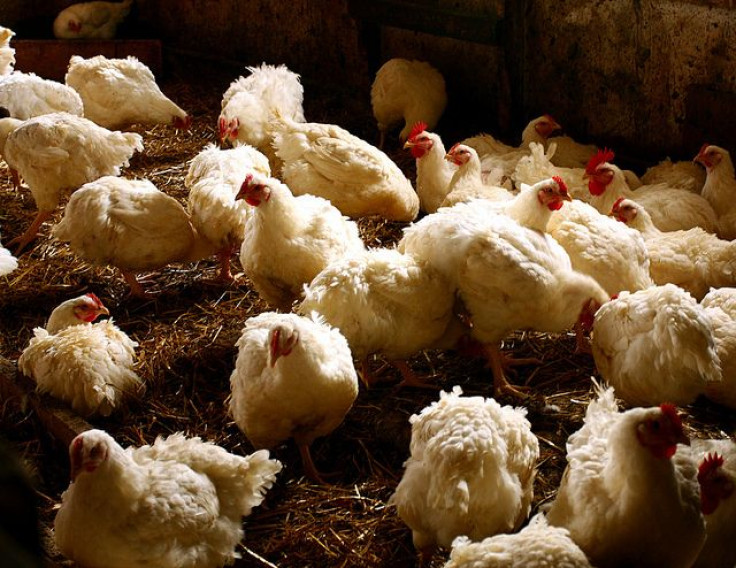USDA Aims To 'Modernize' Salmonella Prevention In Poultry, Pork Production

The U.S. Department of Agriculture’s Food Safety and Inspection Service (USDA FSIS) announced a “Salmonella Action Plan” on Wednesday in the hopes of modernizing poultry and pork slaughter inspection, and reducing the presence of the bacteria — one of the most important contaminants it’s tasked with preventing.
The plan aims to reduce the amount of illnesses caused by Salmonella, known as Salmonellosis, by at least 4,286 reported cases each year. While the Centers for Disease Control and Prevention (CDC) estimates that 1.2 million people fall ill to the bacteria, only about 42,000 cases are reported. The FSIS’s plan outlines new training guidelines for poultry inspectors, increased food-testing procedures, and improved disease-tracking and prevention procedures. Additionally, it lays out a plan to combat Salmonella in pork products, of which it had previously stopped testing because “the percent of pork carcass samples positive for Salmonella was consistently very low.”
“Far too many Americans are sickened by Salmonella every year,” Under Secretary for Food Safety Dr. Elisabeth Hagen said in a statement. “The aggressive and comprehensive steps detailed in the Salmonella Action Plan will protect consumers by making meat and poultry products safer.”
The plan was developed over the course of a two-year study regarding the causality and frequency of Salmonella contamination, according to CNN, and it also comes just weeks after a multistate outbreak of the Salmonella Heidelberg strain infected 389 people, causing about 40 percent of them to be hospitalized. The outbreak was traced back to three processing facilities owned by California-based Foster Farms. At the time of the outbreak, the USDA noted that previous conditions at the facilities contained “fecal material on carcasses,” as well as “poor sanitary dressing practices, insanitary food contact surfaces, and direct product contamination.”
Despite being a serious outbreak, none of the chicken was recalled because it is considered a naturally occurring bacteria rather than an adulterant — such as E. coli — and can be killed by cooking chicken to at least 165 degrees Fahrenheit. “This plan is a step in the right direction, but a more straightforward approach would be to declare Salmonella an adulterant,” said food safety attorney Fred Pritzker on his site, Food Poisoning Bulletin.
According to the CDC, most people who become infected with Salmonella develop diarrhea, fever, and abdominal cramps within 12 to 72 hours after consuming contaminated food. While most people are able to recover from the illness without treatment, some develop diarrhea so severe that they must visit a hospital. Others may also develop infection in the bloodstream, known as septicemia, which can cause death.



























